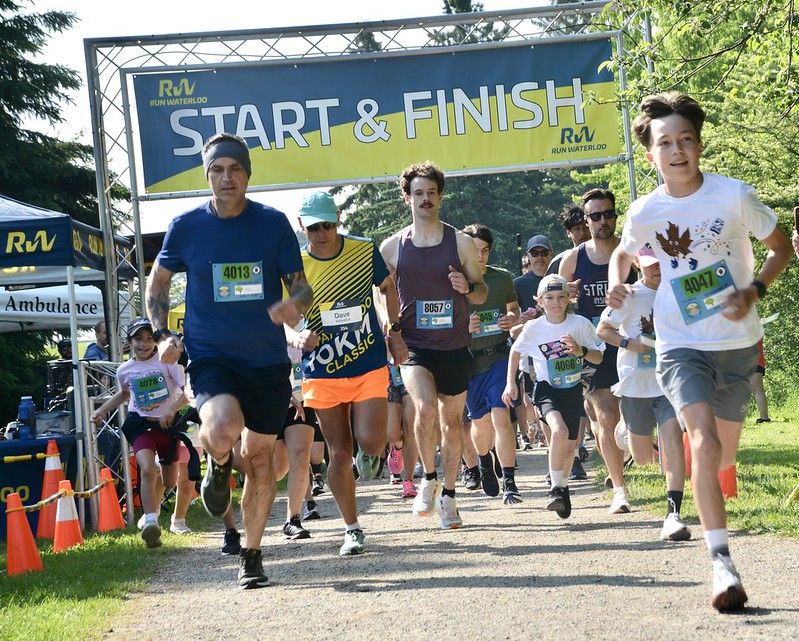To start things off, I just want to say I hope everybody is staying healthy and happy during this COVID-19 situation!
One of the biggest issues we have been tackling with athletes at H+P is just how hard should we be training right now. With no clear races in the foreseeable future, and the risk of burnout and injury going up when you are training at your FULL capacity over long periods of time, it definitely makes sense to decrease your training load for the time being. However, at what point are you decreasing things TOO much?
Where do you fit?
Race-Training Ready
All of the decisions about how to change your training comes down to a person’s individual circumstances and goals. For instance, somebody who is thinking about PB’ing a marathon the second we have finalized race dates will probably want to stay fit enough at a strategically decreased volume so that they are only a few weeks removed from a 12-16week marathon build.
Race Ready
On the other hand, somebody who tends to be exceptionally injury resistant and just enjoys high-level training might choose to keep training at a high level regardless.
Recovery Time
Then, there might be the person who is prone to injury and burnout and may take this opportunity to detrain to a more significant degree, perhaps even including some major time off, saving their training weeks for when we have a definite set of races scheduled.
With whatever category or hybrid of categories above that you fall into, I am going to take a look at just how much you can expect to detrain at different levels of activity. Before we get into the effects of training at a decreased volume, we must first look at how detraining actually happens when we do nothing. Understanding the basics of the physiology is not only super interesting (just me?), but it’ll help guide your decision making for how you manage your decreased volume and help you understand why you feel the way you do when you’re coming back!
Physiology of detraining: V02max Changes
There are a different phases and reasons why we slow down when we’re not training. First, researchers have shown that our initial slow-down comes from a loss in plasma volume (the fluid component of your blood). If your plasma volume is up, your arteries/heart will be stretched out more, which increases the elastic recoil force and improves the massive movement of blood through your circulatory system. As I’ve written about before, this is a great way training in the heat can enhance performance; it triggers a higher than normal plasma volume.
So just how much of an impact can this acute change have on our performance? There are two major predictors of running performance- running economy and ability to consume oxygen.
Well, a drop in plasma volume won’t really impact your running economy, but it WILL impact your V02max, or your ability to consume oxygen. For instance, this study showed a 4.7% drop after 2 weeks of not training.
Another study took a little more complicated look and followed the athletes across a few time periods. The drop in V02 max according to each period was:
-12 days no training: about a 7% decline
-21 days no training: about a 14% decline
-56 days no training: about a 16% decline
Consistent with other studies, for the first 2-4 weeks, you’re looking at about a 5-10% decline in V02max, and that will primarily be from a drop in plasma volume.
This study also did a good job of summarizing why. Some key findings included:
- Stroke volume (volume of blood pumped/time) decreased quickly in the initial parts of detraining, and never dropped below that of the controls (sedentary subjects- your hard-earned plasma volume doesn’t fully go away!)
- The density of the capillaries (tiny blood vessels) did NOT decline with inactivity during these periods
- Two key enzymes used in aerobic respiration (citrate synthase and succinate dehydrogenase- get out your grade 10 science notes!)- declined a little but still remained 50% ABOVE the sedentary control.
So, what this study and many others like it show is that even if you do NOTHING, many of the hard-earned adaptations we gain with consistent training over time such as capillary density does not disappear right away.
In fact, this study showed that even after the 12 weeks of detraining, the aerobically fit subjects still showed significantly higher V02max (50.8 vs. 43.3mL of O2/kg).
Yes, plasma volume will drop quickly, but it’s easy to get back as I’ve written about here. And the adaptations that took a long time to develop will stay with you, not completely, but to a surprisingly high degree, even if you do nothing for 12 weeks!
Physiology of detraining: Running Economy
While V02max is a reasonably good predictor of performance for sports like cycling and XC skiing, it really does not do a great job of predicting how fast of a runner you will be. The other huge factor contributing to our success is how efficiently we use the oxygen we bring in to propel us forward as we run.
This economy comes from specific physical traits, some of which we are born with, and some of which we develop over time. This should not be confused with how your form LOOKS when you run. You cannot get a good idea of economy using the eyeball test unless it is an extreme case as I have written about here. For instance, an Achilles that is stiffer and springier will give you free forward running momentum, compared to one that’s less springy.
This is also why runners who do a little bit of cycling tend to do well quickly, while proportionally cyclists have a much harder time making the jump to running. Cycling economy is easy to develop relatively speaking to running economy as studies like this one shows.
So, if running economy is so important and so hard to develop, how quickly does it go away when we de-train?
One study showed that subjects showed absolutely no loss in economy after 2 weeks when looking at economy at 75% and 90% of V02max. So, while their V02max dropped by ~4-7%, how efficiently they used the oxygen they were still able to bring in did not change.
This parameter of change in running economy is a little less studied in the literature (in part because studies including other sports always involve V02max to help add to the pool of research). However, everything I’ve come across seems to support the same thing: it will take a long time for your running economy to change. This is especially true if you don’t gain weight.
Practical Applications:
What does all this tell us? A good generalization is that the harder the adaptation is to develop, the harder it will be to lose with a stop in training.
Whenever I read this research, I’m always encouraged to re-learn that even after 12 weeks of no activity, things like our capillary density remains elevated and running economy stays just as high. The months of preceding hard work stays with us! It’s also nice to know that the initial drop in fitness that we experience is primarily from a drop in plasma volume – something that is quite easy to spike again!
For instance, this study shows a 7% increase in performance in cool weather related to heat acclimation. It is thought that this boost in performance was primarily from the heat triggering a spike in plasma volume- and the heat adaption only took 5 days!
On top of that, all of these studies discussed above are looking at a complete stop in training. If not training over a 2-12 week period results in changes primarily related to (relatively) easy things to fix, what about training at a reduced volume to drag out that lingering fitness? How long can we maintain most of our fitness at a reduced volume, and just how low can the volume be? That is what I will discuss in the next article.






